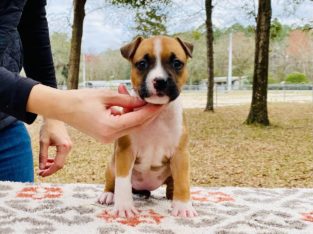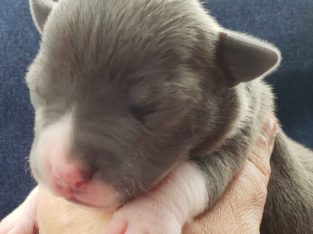Uncovering the Staffordshire Bull Terrier’s Historical Roots
When it comes to dog breeds, few possess the rich heritage and storied history of the Staffordshire Bull Terrier. This small, muscular breed is known for its fierce loyalty, playful personality, and incredible strength. But where exactly did this remarkable breed come from, and what makes it such a beloved companion to so many people around the world? In this article, we’ll take a close look at the Staffordshire Bull Terrier’s historical roots, tracking its journey from its origins in England to its current status as one of the world’s most popular breeds.
The Staffordshire Bull Terrier: An Overview
Before we delve into the breed’s history, let’s first take a closer look at what makes the Staffordshire Bull Terrier such a unique and beloved breed. As its name suggests, the Staffordshire Bull Terrier traces its roots back to the English county of Staffordshire, where it was originally used as a fighting dog. Over time, however, the breed’s fierce tendencies were bred out, and today, the Staffordshire Bull Terrier is known for its friendly and playful nature.
The Staffordshire Bull Terrier is a muscular, medium-sized breed that typically weighs between 35 and 50 pounds. Despite their size, these dogs are incredibly strong, with a bite force that rivals that of much larger breeds. They have short, smooth coats that can come in a variety of colors, including black, blue, brindle, fawn, red, and white. Their ears are typically small and close to the head, and they have a short, stubby tail.
While the Staffordshire Bull Terrier may look tough on the outside, they are actually incredibly affectionate and loyal towards their owners. These dogs thrive on human attention and are known for forming close bonds with their families. They are also quite playful and energetic, and may require frequent exercise and stimulation to keep them happy and healthy.
Early Origins
To trace the origins of the Staffordshire Bull Terrier, we need to turn back the clock to 19th-century Britain. At the time, dogfighting was a popular spectator sport, and breeds like the Bull Terrier and Bulldog were often used in these brutal contests. However, with the passage of the Cruelty to Animals Act in 1835, dog-fighting was made illegal throughout England, and breeders began to move away from breeding dogs for this purpose.
One of the breeds created during this period was the Staffordshire Bull Terrier. While some sources suggest that the breed was created by crossing Bulldogs with Terriers, others maintain that it was descended from the Old English Bulldog, a now-extinct breed that was commonly used for bull-baiting. Regardless of the breed’s exact origins, what is clear is that by the mid-19th century, the Staffordshire Bull Terrier had emerged as a distinct breed in its own right.
The Staffordshire Bull Terrier in the 20th Century
Over the course of the 20th century, the Staffordshire Bull Terrier continued to evolve and develop. While the breed was initially used for dogfighting, breeders began to move away from this practice and instead focused on creating a more gentle and family-friendly dog. With its friendly and playful personality, the Staffordshire Bull Terrier quickly became a popular pet and companion, and by the 1930s, the breed had become a fixture in British households.
During World War II, the Staffordshire Bull Terrier faced a new challenge, as food shortages and other difficulties made it difficult for families to care for their pets. Many dogs were abandoned, and the breed’s population nearly went extinct. However, a small group of breeders worked hard to keep the breed alive, and by the end of the war, the Staffordshire Bull Terrier had begun to make a comeback.
In the years following the war, the Staffordshire Bull Terrier continued to grow in popularity, both in Britain and around the world. In 1935, the breed was officially recognized by the Kennel Club, which helped to solidify its status as a distinct breed. Today, the Staffordshire Bull Terrier remains a beloved companion to countless families, thanks to its playful personality, loyalty, and unwavering devotion to its owners.
FAQs about the Staffordshire Bull Terrier
Q: What kinds of health problems are common in Staffordshire Bull Terriers?
A: Like all breeds, the Staffordshire Bull Terrier can be prone to certain health problems. Some of the most common concerns include hip dysplasia, allergies, and skin issues. It’s important to work with a reputable breeder or rescue organization to ensure that you are getting a healthy dog.
Q: How much exercise does a Staffordshire Bull Terrier need?
A: Staffordshire Bull Terriers are an active breed and generally require regular exercise and playtime to keep them healthy and happy. They are also a muscular breed, so activities like weight-pulling or agility can be great options for keeping them in good shape.
Q: Are Staffordshire Bull Terriers good with kids?
A: Yes, Staffordshire Bull Terriers are typically very good with children. These dogs are incredibly loyal and protective of their families, and they can make great playmates for kids. As with any breed, however, it’s important to supervise interactions between dogs and children to ensure that everyone stays safe.
Q: Are Staffordshire Bull Terriers aggressive?
A: While Staffordshire Bull Terriers were originally bred for fighting, today’s dogs are typically friendly and gentle towards people. Like all breeds, however, Staffordshire Bull Terriers can become aggressive if they are not properly socialized or trained. It’s important to work with a trainer or behaviorist to ensure that your dog is well-behaved and socialized.
Q: Should I adopt a Staffordshire Bull Terrier?
A: If you are interested in adopting a Staffordshire Bull Terrier, make sure you do your research and find a reputable breeder or rescue organization. This breed can make a wonderful companion, but it’s important to provide them with proper training, socialization, and exercise to keep them healthy and happy.





